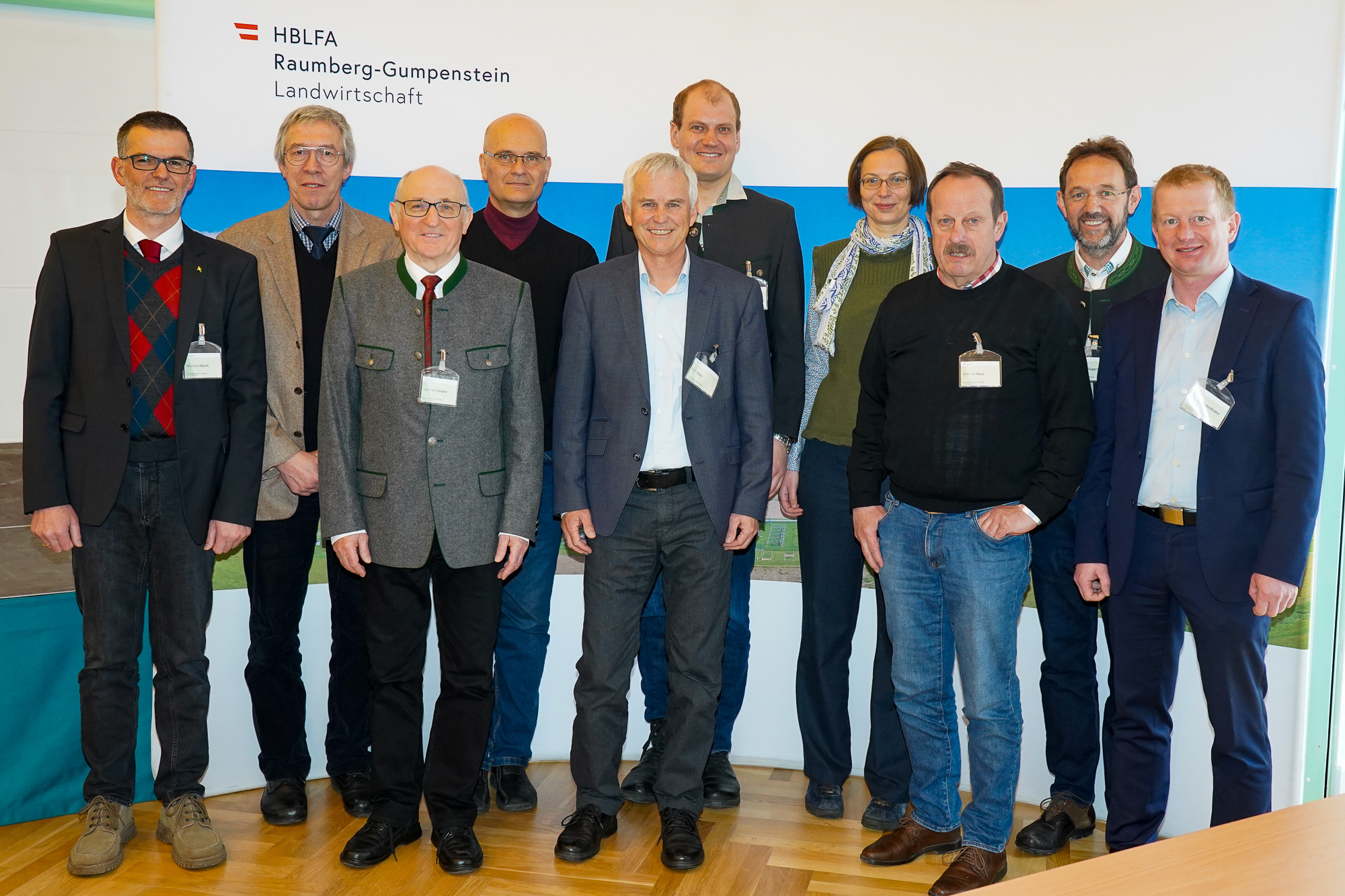On March 29, 2023, Direktor Dr. Johann Gasteiner from the HBLFA Raumberg-Gumpenstein opened the event and welcomed the participants and the speakers. Afterwards, the first block of lectures was dedicated to the 50th anniversary of the livestock industry conference. Dr. Thomas Guggenberger, director of the Institute for Livestock Research at the HBLFA Raumberg-Gumpenstein, presented the changes in livestock farming and the livestock industry conference over the last 50 years. Afterwards, department head Mag. Christian Kasper from the Federal Ministry of Agriculture, Forestry, Regions and Water Management commented on the importance of the livestock industry conference for the educational and advisory tradition of the Federal Ministry. Block one was completed by Dipl.-Ing. Karl Wurm, Styrian Chamber of Agriculture, and explained the importance of the livestock industry conference for feeding advice in Austria.
The second block of the conference was all about efficiency in cattle production. Dr. Georg Terler from the HBLFA Raumberg-Gumpenstein reported on efficiency as a research focus at the research institute. Afterwards, Univ.-Doz. Dr. Leonhard Gruber, former director of the Institute for Livestock Research at the HBLFA Raumberg-Gumpenstein, on the influence of genotypes and concentrated feed levels on the production, efficiency and health of dairy cows. Before the lunch break, Dr. Margit Velik, also from the HBLFA Raumberg-Gumpenstein, presented block two with the topic “Holstein genotypes and Simmental cattle in bull fattening: animal performance and animal value for slaughter.”
After the lunch break we continued with block three on the topic of feeding and feed quality. Univ.-Prof. Dr. Karl-Heinz Südekum from the University of Bonn started with a lecture on current developments in energy and protein assessment for ruminants. Afterwards, Ing. Reinhard Resch from the HBLFA Raumberg-Gumpenstein gave a talk about LK basic feed projects as a basis for the quality development of fermentation feed and hay in Austria, thus concluding block three.
Block four focused on fattening bulls and calves with dairy breeds. Wilfried Naue from the Lower Saxony Chamber of Agriculture answered the question of whether fattening bulls with dairy breeds was really an alternative. The topic continued with the topic of production and sales development on the domestic beef market, which was presented by Dipl.-Ing. Johann 's Minihuber from the Österreichische Rinderbörse GmbH was illuminated. In the last article of the first day, Dipl.-Ing. Martin Brader from Mank in Lower Austria about practical experiences with veal rosé fattening.
On March 30th, the second day of the conference, block five continued with the topic “The livestock industry in times of crisis”. Priv. Doz. Dipl.-Ing. Dr. Franz Sinabell from the Austrian Institute for Economic Research (WIFO) introduced this block with his lecture “Agriculture in times of crisis”. Mag. Thomas Loibnegger from the Styrian Chamber of Agriculture followed with the topic “The energy self-sufficient farm - a new perspective”. The end of the fifth block was a recorded interview with Bernhard Schaumberger, a farmer from Wörschach in Styria, about his practical experiences with electric drives in agriculture.
After a short break we continued with the sixth and final block. Dr. Georg Terler spoke about the methane reduction potential of lemongrass, biochar and other feed additives in cattle feeding. The last contribution of the conference was about the topic of feed additives - legal situation and practical implementation, which was presented by Dipl.-Ing. Franz Doppelreiter from the Austrian Agency for Health and Food Security was highlighted.
Feedback from conference participants and the lively participation in the discussion of the presentations showed great interest in the conference. This hybrid event offered interested farmers, advisors, teachers and livestock industry professionals a valuable training opportunity.

Conference proceedings and lectures:
Pictures from the 50th livestock industry conference:





























































